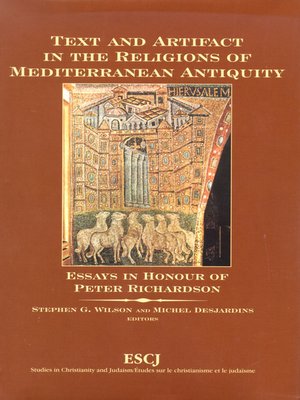Text and Artifact in the Religions of Mediterranean Antiquity
ebook ∣ Essays in Honour of Peter Richardson · Studies in Christianity and Judaism
By Stephen G. Wilson

Sign up to save your library
With an OverDrive account, you can save your favorite libraries for at-a-glance information about availability. Find out more about OverDrive accounts.
Find this title in Libby, the library reading app by OverDrive.



Search for a digital library with this title
Title found at these libraries:
| Library Name | Distance |
|---|---|
| Loading... |
Can archaeological remains be made to "speak" when brought into conjunction with texts? Can written remains, on stone or papyrus, shed light on the parables of Jesus, or on the Jewish view of afterlife? What are the limits to the use of artifactual data, and when is the value overstated? Text and Artifact addresses the complex and intriguing issue of how primary religious texts from the ancient Mediterranean world are illuminated by, and in turn illuminate, the ever-increasing amount of artifactual evidence available from the surrounding world.
The book honours Peter Richardson, and the first two chapters offer appreciations of this scholarship and teaching. The remaining chapters focus on early Christianity, late-antique Judaism and topics germane to the Roman world at large. Many of the essays relate to features of Jewish life — the epigraphic evidence for gentile converts to Judaism or for Jewish defectors, ancient accounts of the Essenes or of the siege of Masada, and the material context of the first great rabbinic work, the Mishnah. Other essays connect early Christian texts with the social and cultural realia of their day — modes of travel, notions of gender, patronage and benefaction, the relation of tenants and owners — or reflect on the aesthetics of Christian architecture and the relation between building and ritual in Constantinian churches. One study relates the writing of the famous novelist Apuleius to a household mithraeum in Ostia, while another explores the changing appropriation of religious realia as the Roman world became Christian.
These wide-ranging and original studies demonstrate clearly that texts and artifacts can be mutually supportive. Equally, they point to ways in which artifacts, no less than texts, are inherently ambiguous and teach us to be cautious in our conclusions.







